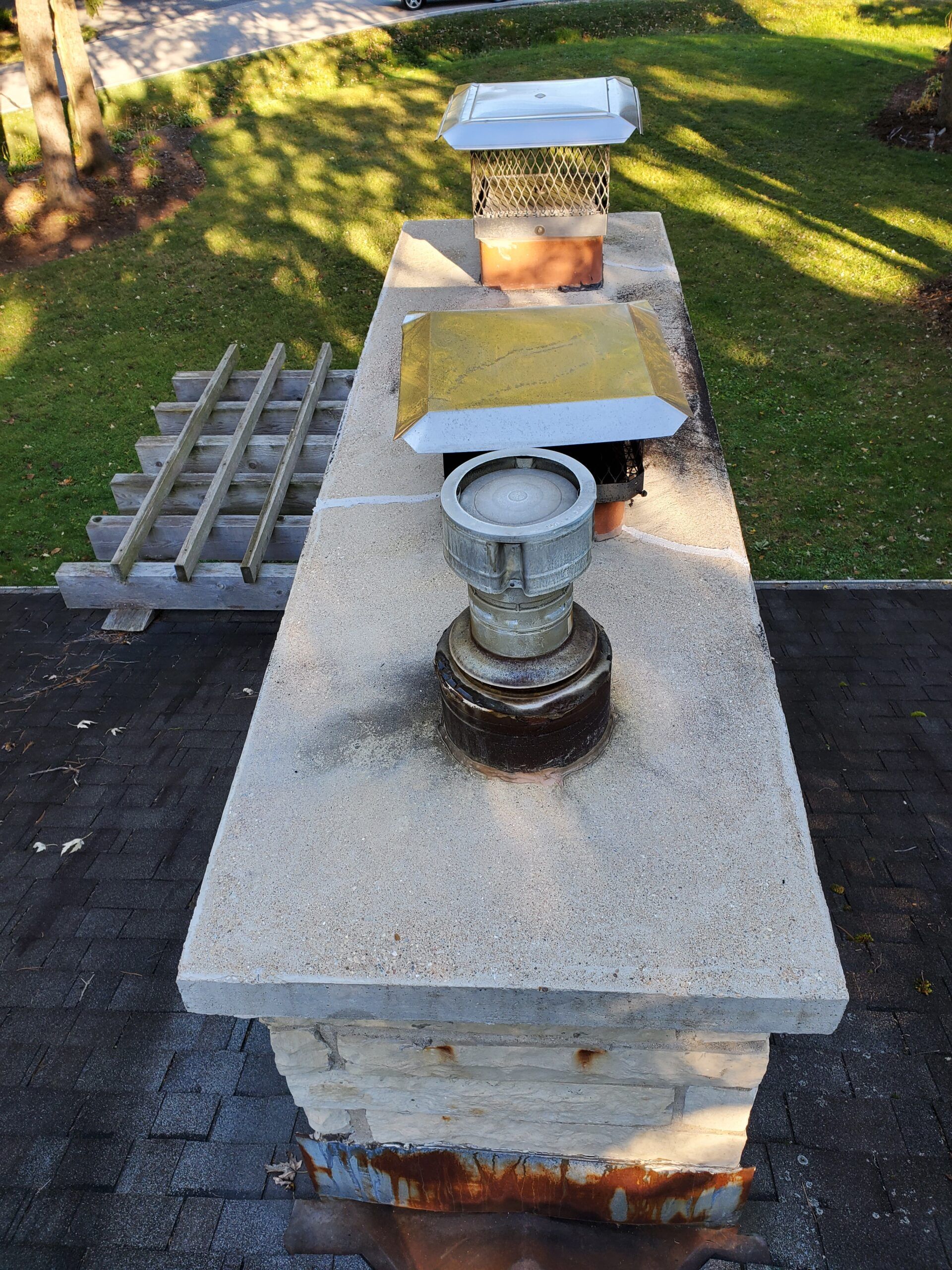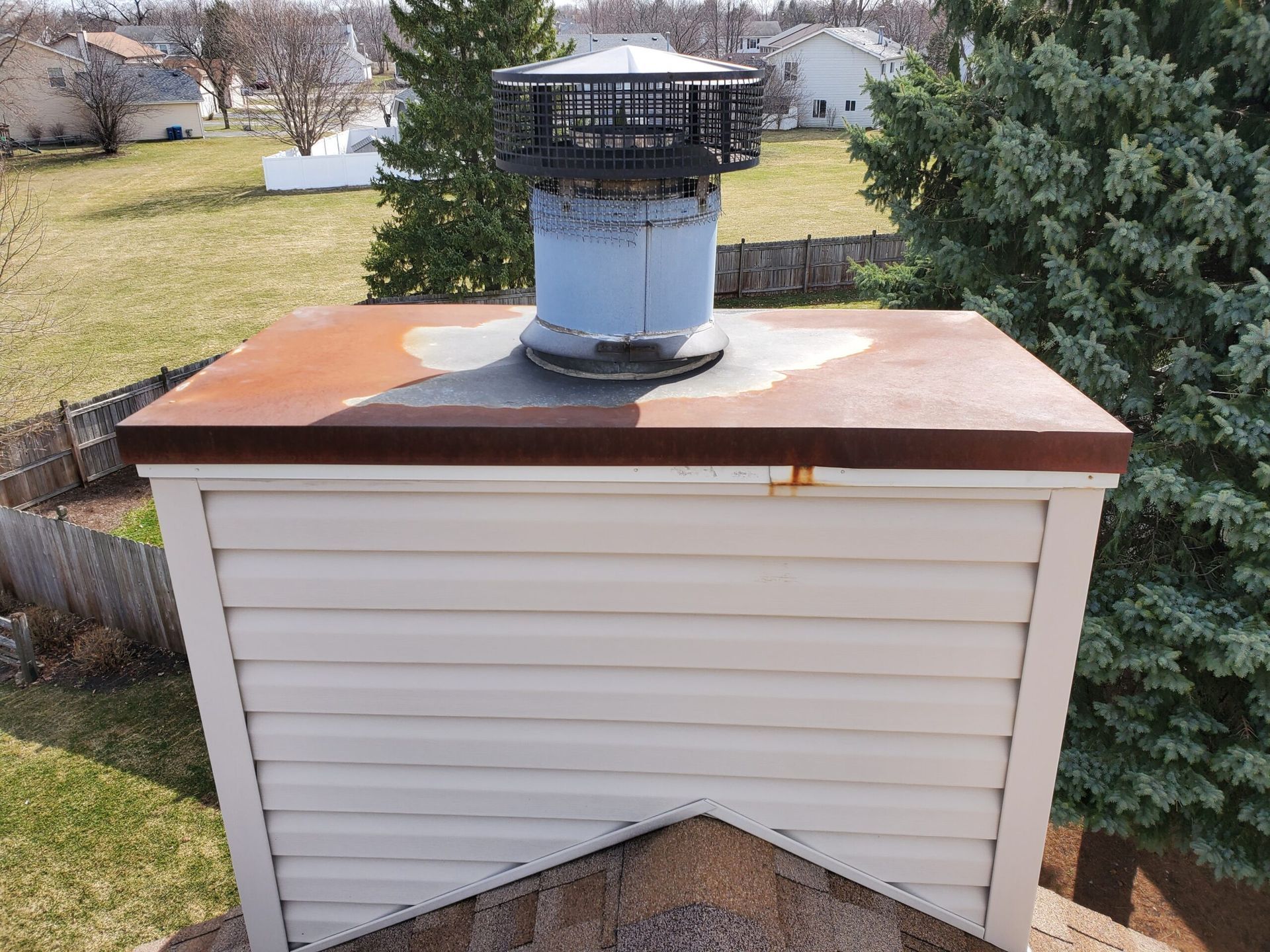Naperville Chimney Services, based in Oswego, IL, is your go-to company for chimney cleaning and maintenance services. With a team of CSIA- and NCSG-certified professionals, including active firefighters, and expertise dating back to our founding in 1994, we are dedicated to ensuring the safety and efficiency of your chimney. Let us take care of your chimneys so you can enjoy a warm and cozy fireplace all year round.
Chimney Sweeping Services
At Naperville Chimney Services, our chimney sweeping services cater to a variety of fireplaces, including wood-burning fireplaces, gas logs, and inserts. We are specialists in cleaning these fireplaces to guarantee their efficient and safe operation. Trust our team to expertly sweep your chimney, ensuring a clean and functional fireplace for your home.
Chimney Inspections
Our comprehensive chimney inspections delve deep into the condition of your chimney, offering a detailed assessment of its state. By identifying potential issues and providing recommendations for repairs or maintenance, we ensure your chimney remains in optimal condition. With our team’s expertise and advanced technology, such as camera scans for precise assessments, rest assured that your chimney is well taken care of by Naperville Chimney Services.
NFPA Recommendations and Appointment Protocol
NFPA 211 14.2: "Chimneys, Fireplaces and Vents shall be inspected at least once a year." At Naperville Chimney Services, we take this recommendation seriously and strive to provide thorough chimney inspections and cleanings to safeguard your home.
We understand the importance of punctuality and convenience for our customers. While we aim to arrive at your scheduled appointment time, we kindly request a 30-minute window on either side for flexibility. Upon arrival, our sweeps will introduce themselves and inquire about any specific concerns or issues that need attention during the evaluation process.
Inspection Process and Services
During the evaluation, our sweeps will assess the fireplace to determine if it requires sweeping. They will meticulously inspect all components of the chimney, adhering to NFPA 211 Level 1 inspection standards. Using rotary sweep techniques, our sweeps will remove creosote from critical areas such as the smoke shelf, firebox walls, and damper door surroundings for optimal performance.
If your fireplace is gas-operated, our sweeps will ensure the gas line is functioning correctly. In the event of any issues, they will provide recommendations and potentially refer you to a professional for further assessment or repairs, ensuring the safety and efficiency of your system.
Exterior Inspection and Completion
Another sweep will evaluate the exterior chase and crown of your chimney during the inspection. Depending on the findings, our sweeps can conduct minor fixes or patching or recommend further assistance from a mason for more significant issues.
At the conclusion of your appointment, our sweeps will review a fire safety checklist with you and address any questions or concerns you may have. Additionally, they will provide guidance on safe fireplace lighting practices to enhance your fireplace experience.
Customer Support and Service Duration
The inspection process for a prefabricated fireplace typically takes around 30 minutes, while a masonry fireplace inspection may require approximately 45 minutes. Our knowledgeable sweeps are available to address any inquiries you may have regarding your fireplace or fire safety practices.
Choose Naperville Chimney Services for reliable and comprehensive chimney cleaning and inspection services, ensuring the safety and efficiency of your fireplace. Contact us today for expert assistance in maintaining your chimney and fireplace.
Fireplaces and Construction Varieties
Types of Fireplaces
- Wood Burning: These fireplaces burn real wood or Duraflame logs and may have a gas log lighter for easier ignition.
- Gas Logs: Utilizing vented and non-vented gas logs, this type of fireplace offers convenience and efficiency.
- DirectVent: A self-contained fireplace with a glass front that is easily controlled, providing a modern and sleek look.
- Wood Stoves: A self-contained heating appliance that burns wood to produce heat for a home or indoor space. Wood stoves are typically made of cast iron or steel and designed to safely contain a fire. They offer a more efficient and cleaner heating alternative than traditional fireplaces.
Types of Construction
- Masonry Fireplaces: Featuring a brick or stone exterior and an all-brick interior with a rectangular damper door.
- Prefab Fireplaces: Having a siding or stucco exterior and a metal frame on the interior firebox area, equipped with a round or square damper door for efficient operation.
Chimney Cap vs. Chimney Chase Cover
We offer chimney cap replacement or reinstallation services to protect your chimney from debris and animals. Additionally, we can patch minor cracks in the concrete crown of your brick fireplace to maintain its integrity and lifespan.
With Naperville Chimney Services, you can trust that your chimney is in expert hands. Our team is dedicated to providing top-notch service and ensuring the safety and efficiency of your fireplace. Contact us today to schedule your chimney sweeping and inspection services and experience the difference Naperville Chimney Services can make for your home.
Contact us at (630) 357-1696 and let Naperville Chimney Services take care of your chimney needs so you can enjoy a warm and cozy fireplace worry-free.













